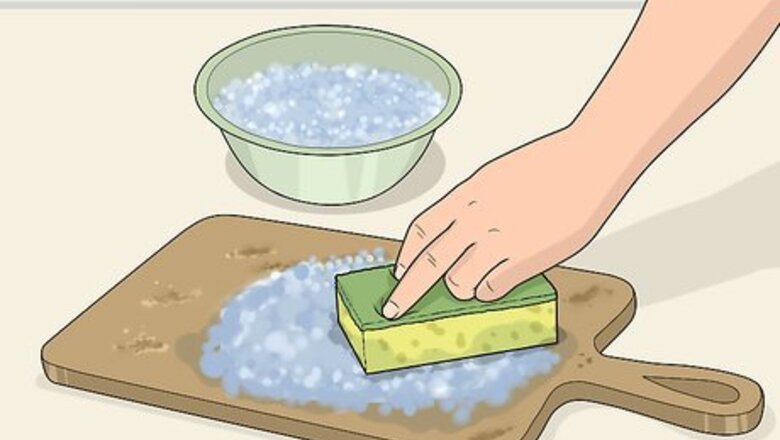
views
Cleaning and Sanitizing the Board
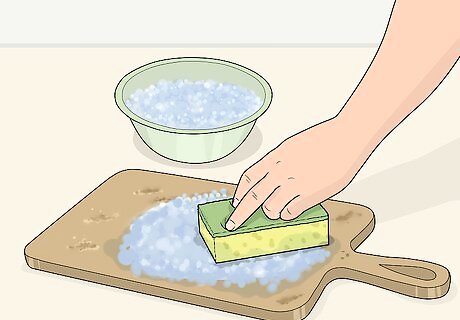
Scrub the board with warm water and dish soap. Place the wooden board in an empty sink. Soap up a sponge or dishcloth with gentle dish detergent and thoroughly rub the entire surface, edges and handle of the board until it is ultra clean. Rub away any obvious food particles, focusing especially on any crevices in the wood. Lastly, rinse away the soap with copious amounts of warm water and pat dry. Never put your wooden cutting board in the dishwasher, as this can cause the wood to warp and crack. Instead, set your cutting board aside to wash by hand.
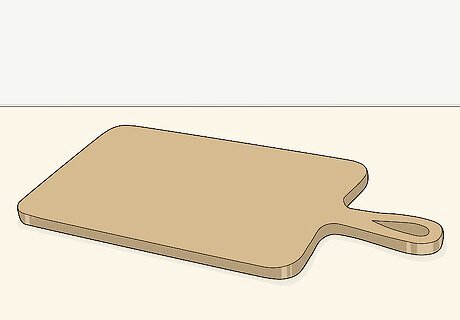
Let the board air-dry for several hours. Keep the cutting board in a place where it can receive adequate air circulation on all surfaces, particularly the flats. Try to avoid using the board until it’s dry to the touch.
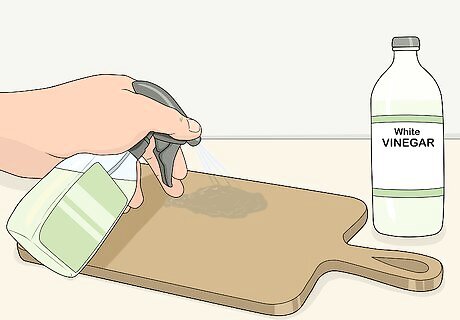
Sanitize and deodorize your cutting board with vinegar or a commercial, food-safe sanitizer. Pour a small amount of white vinegar into a spray bottle or purchase a spray bottle of sanitizer for hard surfaces. Spray the surfaces moderately, ensuring that all surfaces are wetted. Wait 3-5 minutes for the vinegar to perform its actions, then rinse off the board with cool running water. For the commercial sanitizer, follow the directions on the bottle. You might need to do this fairly often if you have an older, more worn out cutting board. Commercial sanitizers can be purchased at supermarkets, large retailers, or at home improvement stores. If you aren’t a fan of vinegar, try soaking the tip of a paper towel in hydrogen peroxide and blotting the surface of the board.
Let the board air-dry before placing it back in storage. Set the board out on a towel on your countertop or table. Leave it there for 2 to 3 hours to ensure it's fully dry before you put it away in your kitchen. Storing a wet cutting board can lead to mold or mildew.
Applying Oil to the Surface
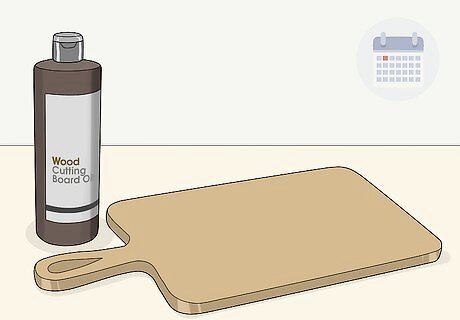
Try to season your board at least once per month. Schedule a time to condition your cutting board if you use it often. While the seasoning process itself isn’t that time-consuming, you need to set aside several hours so the board can dry. If you’re an avid chef, consider setting aside time weekly to oil and dry your wooden cutting boards. If you only use your cutting boards once or twice per year, you don’t need to worry about seasoning them that frequently. If you notice water soaking into the wood, it’s time to season it.
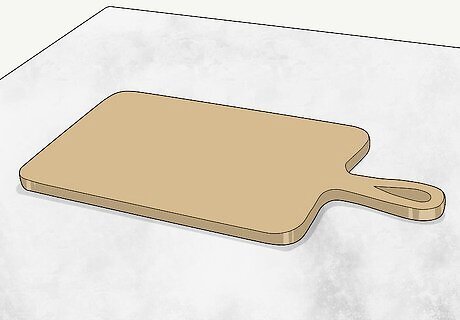
Lay the clean cutting board on a flat surface. Set your board somewhere in your kitchen, like a countertop or table. Make sure that the item is already washed and dried, as you don’t want to season a dirty surface. You can also keep your board in a large container, like a pot lid holder. This can make it easier to control the oil.
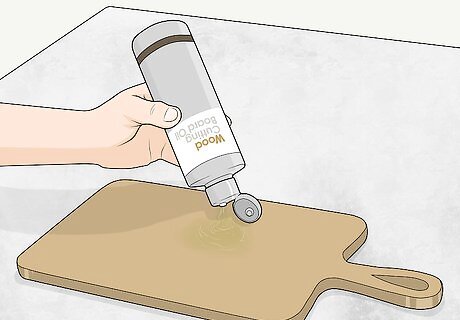
Pour a plum-sized amount of mineral oil onto the board. Take a bottle of kitchen-grade mineral oil and pour out a small pool of liquid onto the wooden surface. Feel free to drizzle the oil onto the board, or pour it all in one place. Don’t worry about using too much—you can always wipe away the excess oil later. Coconut oil is also a great option, since it contains a lot of saturated fat. Don’t use vegetable or olive oils to condition your board. After they soak in, they’ll become rancid and make the cutting board smell terrible. While walnut and almond oils are possible alternatives, they shouldn’t be used if a member of your household has a nut allergy.
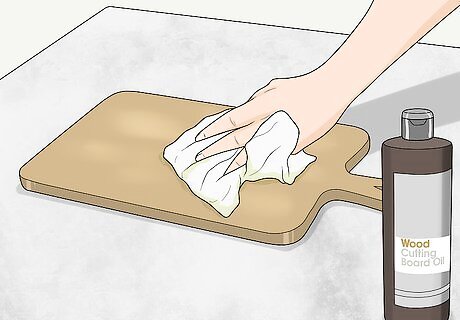
Rub the oil into the sides and edges of the board with a dish towel. Take a clean dish towel and rub the mineral oil into the wood. Use circular, sweeping motions as you go. Massage the oil into the front and back of the board, as well as the edges and handles. Use the same dish towel when you season your cutting board in the future. Don’t worry about wiping off any excess oil from the top of the board, as you can do this later.
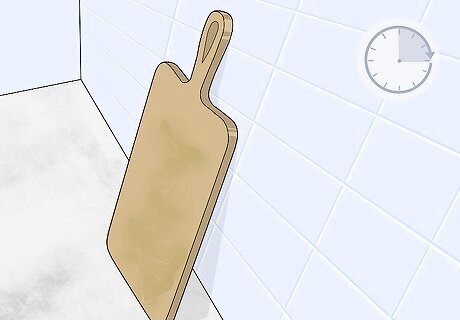
Perch the cutting board on its edge for at least 3 hours. Set the wooden board on a thin edge, leaning it against a hard surface, if necessary. Wait at least 3 hours before checking on the cutting board again, so the mineral oil has enough time to soak in and condition the wood. You can wait up to 6 hours before checking on the cutting board. If you have a pot lid holder or a similar item, you can prop the board up vertically in the container.
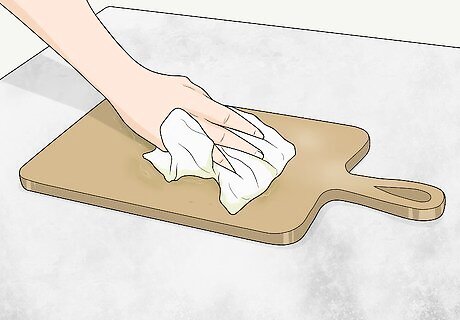
Wipe off any of the excess oil from the board. Use the same dish towel to remove any mineral oil that failed to absorb into the wood. Once you’ve let the cutting board dry overnight, feel free to store the item in its usual spot. Make a note of the date you season the board, so you can start conditioning it on a regular basis.




















Comments
0 comment